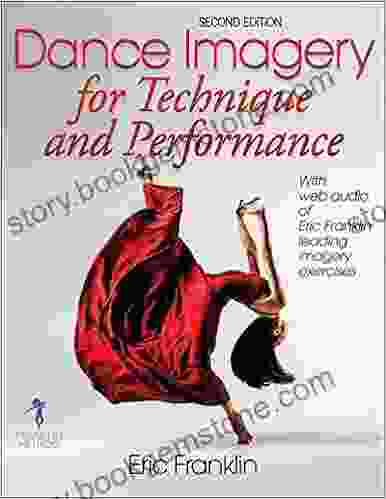Unlocking the Power of Dance Imagery for Enhanced Technique and Performance

Dance imagery, a potent tool in the dancer's arsenal, transcends the physical realm and delves into the depths of the mind. By mentally visualizing and experiencing dance movements, dancers can significantly enhance their technique, performance, and overall artistry. This article explores the multifaceted benefits of dance imagery and provides practical tips and exercises to harness its power.
Understanding Dance Imagery
Dance imagery refers to the deliberate mental rehearsal of dance movements and sequences, absent the physical execution. It involves engaging the sensory pathways associated with dance, including kinesthetic (movement),visual (observing oneself),auditory (rhythm and music),and proprioceptive (body position) senses.
5 out of 5
| Language | : | English |
| File size | : | 18280 KB |
| Text-to-Speech | : | Enabled |
| Word Wise | : | Enabled |
| Print length | : | 395 pages |
| Lending | : | Enabled |
Benefits of Dance Imagery
1. Improved Technique
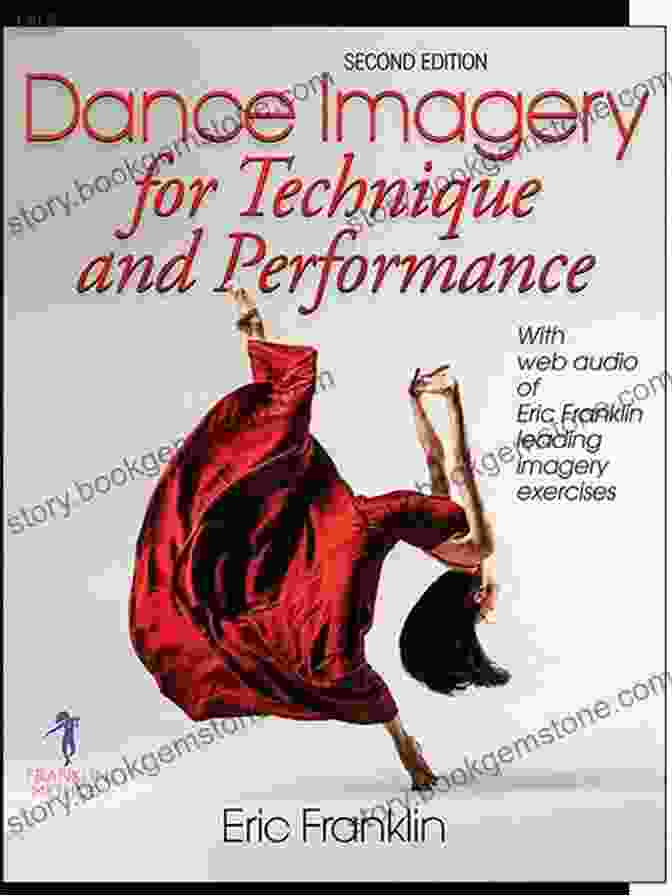
Dance imagery provides an environment for dancers to isolate and focus on specific movements, analyzing their execution without the constraints of physical fatigue or technical limitations. By mentally rehearsing complex sequences, dancers can refine their technique, improve coordination, and develop greater control over their bodies.
2. Enhanced Performance
When dancers use imagery techniques, they create mental representations of their ideal performances. These visualizations enhance confidence and mental preparedness, reducing anxiety and boosting their ability to perform at their peak under pressure. Dance imagery can also help dancers overcome performance challenges, such as stage fright or technical difficulties.
3. Increased Flexibility and Range of Motion
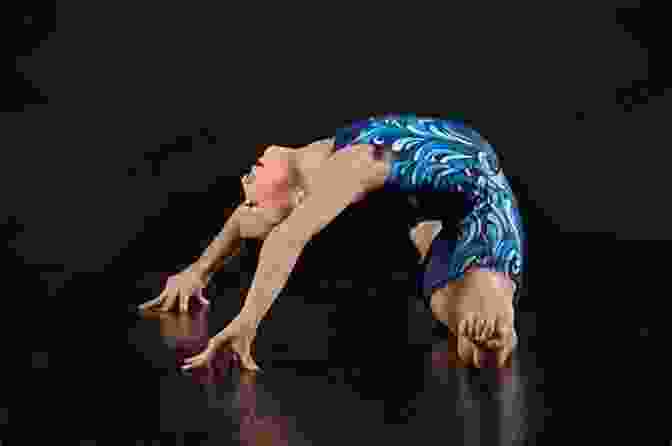
Visualizing dance movements can improve flexibility and range of motion. By mentally rehearsing extreme positions, dancers can push their physical boundaries without risking injury. Dance imagery creates a mind-body connection that promotes a deeper understanding of the body's capabilities.
4. Reduced Risk of Injury
Dance imagery plays a crucial role in injury prevention by allowing dancers to safely explore challenging movements. They can mentally rehearse sequences that may pose a risk of injury, identify potential pitfalls, and develop compensatory strategies to avoid physical harm.
5. Heightened Artistry and Expression
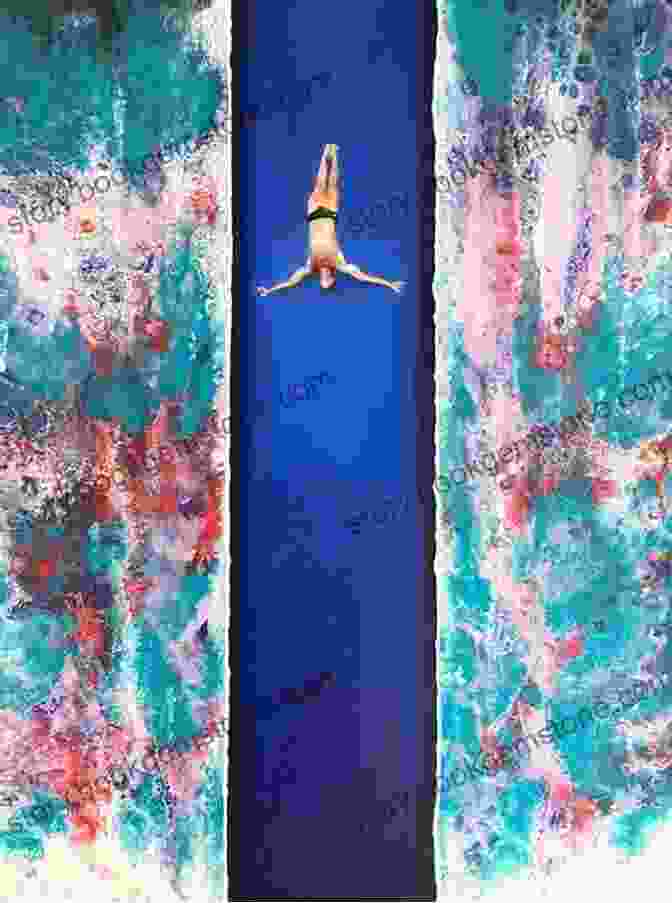
Beyond technical benefits, dance imagery fosters artistic growth and emotional depth. Dancers can envision themselves embodying the character or emotions they wish to convey, allowing them to express themselves more authentically and connect with the audience on a deeper level.
Types of Dance Imagery
There are two main types of dance imagery:
- Internal imagery: The dancer visualizes themselves performing the movements from their own perspective.
- External imagery: The dancer visualizes themselves performing the movements from an outside observer's point of view.
Exercises for Incorporating Dance Imagery
Here are some practical exercises to incorporate dance imagery into your training:
1. Visualization of Perfect Movements
In a quiet space, close your eyes and visualize performing specific dance movements flawlessly. Focus on the sensations and emotions associated with executing the movements with precision and grace. Repeat this exercise regularly to imprint these ideal patterns in your mind.
2. Mental Walk-Through of Routines
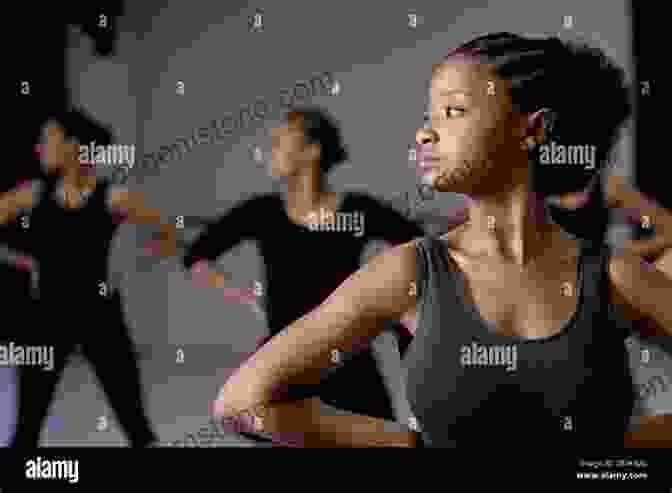
Mentally rehearse your dance routines from start to finish. Pay attention to the transitions between movements, the timing, and the musical cues. This exercise enhances choreography recall, improves performance accuracy, and reduces the likelihood of making mistakes.
3. Choreography Creation Through Imagery
Close your eyes and imagine creating new dance movements. Visualize the steps, sequencing, and flow of the choreography. Experiment with different ideas and explore your creative potential. This exercise stimulates imagination and fosters choreographic development.
4. Imagery for Injury Prevention
Mentally rehearse movements that you find challenging or that pose a risk of injury. Analyze the potential pitfalls and develop compensatory strategies to minimize the likelihood of harm. This exercise builds confidence and prepares you for potential performance situations.
5. Emotional Imagery for Artistic Expression
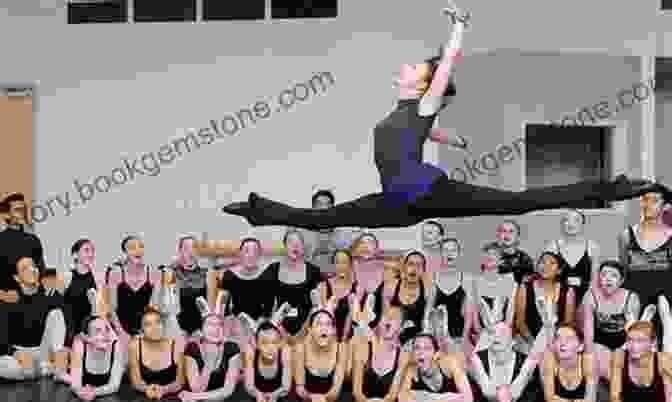
Visualize yourself performing with deep emotion and embodying the character or story behind the dance. Focus on expressing authentic emotions through your movements and connecting with the audience on a personal level. This exercise enhances artistic expression and stage presence.
Tips for Effective Dance Imagery
- Be specific: Clearly visualize the precise movements, positions, and sensations you wish to achieve.
- Engage all senses: Involve as many senses as possible in your imagery, including kinesthetic, visual, auditory, and proprioceptive.
- Be consistent: Practice dance imagery regularly to strengthen the mind-body connection.
- Use positive self-talk: Visualize yourself performing successfully and focus on positive affirmations to reinforce confidence.
- Dedicate time to imagery: Schedule specific time slots in your training regimen for focused imagery practice.
Dance imagery is an invaluable tool for dancers to enhance their technique, performance, and artistry. By harnessing the power of their minds, dancers can visualize themselves executing movements with precision, overcome challenges, and express themselves more authentically. With regular practice and dedicated effort, dance imagery can unlock the dancer's true potential and propel them to new heights of performance excellence.
5 out of 5
| Language | : | English |
| File size | : | 18280 KB |
| Text-to-Speech | : | Enabled |
| Word Wise | : | Enabled |
| Print length | : | 395 pages |
| Lending | : | Enabled |
Do you want to contribute by writing guest posts on this blog?
Please contact us and send us a resume of previous articles that you have written.
 Best Book
Best Book Page Flip
Page Flip Bookshelf
Bookshelf Literary loom
Literary loom Chapter
Chapter Bookish
Bookish PageTurner
PageTurner Bibliophile
Bibliophile Story
Story Inkwell
Inkwell Bookworm
Bookworm Labyrinth
Labyrinth Plot Twist
Plot Twist Prose
Prose Paperback
Paperback Storyteller
Storyteller Sanctuary
Sanctuary Fiction
Fiction Reading
Reading Chronicle
Chronicle Read
Read Frederick Harris
Frederick Harris Sophie Stern
Sophie Stern F Knight
F Knight Christopher Reutinger
Christopher Reutinger Loren Moss
Loren Moss Paul D Marks
Paul D Marks Eric Jerome Dickey
Eric Jerome Dickey Francine Prose
Francine Prose Drew Karpyshyn
Drew Karpyshyn Jennifer Cruz
Jennifer Cruz Tim O Brien
Tim O Brien Tipu Khan
Tipu Khan Lewis Grassic Gibbon
Lewis Grassic Gibbon Jennifer Smith Turner
Jennifer Smith Turner Walter Foster Creative Team
Walter Foster Creative Team Torey L Hayden
Torey L Hayden Kevin Collamore Braun
Kevin Collamore Braun Patricia Briggs
Patricia Briggs Eugene Robinson
Eugene Robinson Michael Eric Dyson
Michael Eric Dyson Stephen Jones
Stephen Jones Jewelle Gomez
Jewelle Gomez Jerry Stahl
Jerry Stahl Frank Gado
Frank Gado Sharon C Cooper
Sharon C Cooper Martyn Clifford
Martyn Clifford S Yvonne
S Yvonne Kara Tatelbaum
Kara Tatelbaum Tim Pratt
Tim Pratt Ocean Vuong
Ocean Vuong Susan Mahalick
Susan Mahalick Edward Brody
Edward Brody P Planat
P Planat Tom Blakemore
Tom Blakemore J L Witterick
J L Witterick Mari Lyn Henry
Mari Lyn Henry Ferrett Steinmetz
Ferrett Steinmetz Regan Cerato
Regan Cerato Keith Svagerko
Keith Svagerko Jeanie Tsui
Jeanie Tsui Lynn F Forney
Lynn F Forney Piers Anthony
Piers Anthony Nathaniel Schiffman
Nathaniel Schiffman Katherine Baber
Katherine Baber Renee D Aoust
Renee D Aoust Mark Rice
Mark Rice Gillian Marchenko
Gillian Marchenko Thota Ramesh
Thota Ramesh Mark Wayne Mcginnis
Mark Wayne Mcginnis Lindsey Tramuta
Lindsey Tramuta Eric Foner
Eric Foner Melissa Hart
Melissa Hart Shoba Narayan
Shoba Narayan Simon Winchester
Simon Winchester Victoria Finlay
Victoria Finlay Ellen Lupton
Ellen Lupton Jacob Broschart
Jacob Broschart Francene Hart
Francene Hart Valerie Steele
Valerie Steele Richard Fife
Richard Fife Robert Hardman
Robert Hardman Hugh Howey
Hugh Howey Farah Bidin
Farah Bidin Erin Robinson Hoffman
Erin Robinson Hoffman Os Cresson
Os Cresson Jade Spark
Jade Spark Jane Dempster Smith
Jane Dempster Smith Frederik L Schodt
Frederik L Schodt Ben Macintyre
Ben Macintyre Dirk Walvoord
Dirk Walvoord Michael C Sturman
Michael C Sturman Sara King
Sara King Zane
Zane Ross Feld
Ross Feld Michael N Marcus
Michael N Marcus Evelyn Gallardo
Evelyn Gallardo E J Fleming
E J Fleming Kennedy Odede
Kennedy Odede Justin Sloan
Justin Sloan Idtravelling
Idtravelling Meiqin Wang
Meiqin Wang Rainer Maria Rilke
Rainer Maria Rilke Gerald Hausman
Gerald Hausman Chanda Prescod Weinstein
Chanda Prescod Weinstein Vera Raye
Vera Raye Jessica Mack
Jessica Mack J M Calverley
J M Calverley Farrah Rochon
Farrah Rochon Mark Tufo
Mark Tufo Wallace Terry
Wallace Terry Frank Settle
Frank Settle Peter Max
Peter Max Henry Kuttner
Henry Kuttner Johnson Cheu
Johnson Cheu Shari Blaukopf
Shari Blaukopf Nice Leng Ete
Nice Leng Ete Yvon Chatelin
Yvon Chatelin Joseph D Addetta
Joseph D Addetta Revised Edition Kindle Edition
Revised Edition Kindle Edition Fredric Brown
Fredric Brown Mark Horrell
Mark Horrell Laura Reiter
Laura Reiter John Cameron Smith
John Cameron Smith Wesley Granberg Michaelson
Wesley Granberg Michaelson Mei Yu
Mei Yu James Caskey
James Caskey L X Beckett
L X Beckett Michael F Kastre
Michael F Kastre Evelio Grillo
Evelio Grillo R Coxton
R Coxton Jessie Redmon Fauset
Jessie Redmon Fauset John Walker
John Walker J Donald Walters
J Donald Walters Philip Caputo
Philip Caputo Ronnie Lipton
Ronnie Lipton Richard Rodriguez
Richard Rodriguez M R Green
M R Green John Floyd
John Floyd Leslie J Sherrod
Leslie J Sherrod Jessica Gadziala
Jessica Gadziala James Woodford
James Woodford Zohara Hirji
Zohara Hirji Weina Dai Randel
Weina Dai Randel Leslie Frontz
Leslie Frontz Roma Ligocka
Roma Ligocka Kid Congo Powers
Kid Congo Powers Teruko Sakurai
Teruko Sakurai Funmi Fetto
Funmi Fetto Eric Shanes
Eric Shanes Stephen Laskevitch
Stephen Laskevitch Ted Andrews
Ted Andrews Uri Dan
Uri Dan Lisa Napoli
Lisa Napoli Mark Dawson
Mark Dawson Stacey Abrams
Stacey Abrams Clark Norton
Clark Norton Emma Sky
Emma Sky Logan Jacobs
Logan Jacobs Eva Priest
Eva Priest Robert C Wood
Robert C Wood Putsata Reang
Putsata Reang Florence Scovel Shinn
Florence Scovel Shinn Frank Argote Freyre
Frank Argote Freyre Marc Uwe Kling
Marc Uwe Kling John W Morehead
John W Morehead Eoin O Callaghan
Eoin O Callaghan Evan Winter
Evan Winter Francisco Martin Rayo
Francisco Martin Rayo Jeff Yang
Jeff Yang Mark Crilley
Mark Crilley John Scalzi
John Scalzi Ignatia Broker
Ignatia Broker Tiece
Tiece David Anicetti
David Anicetti Marion Amberg
Marion Amberg John Mcphee
John Mcphee Kellee L Greene
Kellee L Greene Frederick Starr
Frederick Starr Ramin Zahed
Ramin Zahed Orin Starn
Orin Starn Belinda Austin
Belinda Austin Eric Metaxas
Eric Metaxas Fiona Peart
Fiona Peart Sydney Ladensohn Stern
Sydney Ladensohn Stern Susan Sontag
Susan Sontag Groucho Marx
Groucho Marx Matthew Morgante
Matthew Morgante Jerry Yarnell
Jerry Yarnell Cheryl Probst
Cheryl Probst Erika B
Erika B Maureen Furniss
Maureen Furniss Simran Bansal
Simran Bansal Neal Gabler
Neal Gabler Sheila Hocken
Sheila Hocken L Ron Hubbard
L Ron Hubbard Ken Hultgren
Ken Hultgren Eungjun Min
Eungjun Min Piri Thomas
Piri Thomas Josie Lewis
Josie Lewis Kenyatta Kelechi
Kenyatta Kelechi Ted Loukes
Ted Loukes Hashim Akib
Hashim Akib Jerry Boyd
Jerry Boyd Jennet Conant
Jennet Conant Peter Barnes
Peter Barnes Robert Westbrook
Robert Westbrook Eva Mozes Kor
Eva Mozes Kor Eriko Ogihara Schuck
Eriko Ogihara Schuck Funa
Funa Zaina Brown
Zaina Brown Robert Bailey
Robert Bailey Sharon Swift
Sharon Swift Operation Alpha
Operation Alpha Susan Britt Gallagher
Susan Britt Gallagher Seyyed Hossein Nasr
Seyyed Hossein Nasr Diane Greenberg
Diane Greenberg Ruth E Iskin
Ruth E Iskin Karen Brooks Hopkins
Karen Brooks Hopkins Ursula Bacon
Ursula Bacon Steven Brust
Steven Brust Rudolf Steiner
Rudolf Steiner Fred S Kleiner
Fred S Kleiner Jerry Remy
Jerry Remy Frank Herbert
Frank Herbert Carolyn Brown
Carolyn Brown J L Torres
J L Torres Mark Hillary
Mark Hillary Jay Parini
Jay Parini Sandra Cross
Sandra Cross J Chary
J Chary Maury Aaseng
Maury Aaseng Frances Stonor Saunders
Frances Stonor Saunders Stephanie Mehta
Stephanie Mehta G K Chesterton
G K Chesterton Leigh Forbes
Leigh Forbes Richard Killeen
Richard Killeen George Allen Durkee
George Allen Durkee Katrien Van Der Schueren
Katrien Van Der Schueren Joe Hammond
Joe Hammond Sibylla Nash
Sibylla Nash Joe Kane
Joe Kane Dawn C Crouch
Dawn C Crouch Mary Monroe
Mary Monroe Anna Todd
Anna Todd Kit Sun Cheah
Kit Sun Cheah Graeme I
Graeme I Peter Ford
Peter Ford T R Napper
T R Napper Eric Franklin
Eric Franklin Meniere Man
Meniere Man G S Jennsen
G S Jennsen Ian Warrell
Ian Warrell Raiford Guins
Raiford Guins S K Dunstall
S K Dunstall S Qiouyi Lu
S Qiouyi Lu Mia Black
Mia Black Michaelbrent Collings
Michaelbrent Collings Zenna Henderson
Zenna Henderson Lorraine Hansberry
Lorraine Hansberry Tom Piazza
Tom Piazza Kate Spade New York
Kate Spade New York Luther Standing Bear
Luther Standing Bear Veronica Winters
Veronica Winters John Graves
John Graves Harry Thurston
Harry Thurston David Codamo
David Codamo Peter Schjeldahl
Peter Schjeldahl Rachel Trethewey
Rachel Trethewey Chanrithy Him
Chanrithy Him Mitchell Grey
Mitchell Grey Steven M Barrett
Steven M Barrett Sy Montgomery
Sy Montgomery Jason Anspach
Jason Anspach Nicole R Fleetwood
Nicole R Fleetwood Quang Van Nguyen
Quang Van Nguyen Michelle Holder
Michelle Holder Jess Grippo
Jess Grippo John Tateishi
John Tateishi Glennon Doyle
Glennon Doyle Kristin Van Leuven
Kristin Van Leuven Lucy Vine
Lucy Vine Randy Welborn
Randy Welborn Gabe Fajuri
Gabe Fajuri F Scott Fitzgerald
F Scott Fitzgerald Taylor Branch
Taylor Branch Sandro Jung
Sandro Jung Mike Bockoven
Mike Bockoven Stanley Meisler
Stanley Meisler Martin Gitlin
Martin Gitlin Kevina Hopkins
Kevina Hopkins Samantha Ford
Samantha Ford Ros Per
Ros Per Tom Hoffmann
Tom Hoffmann Stephen Bucaro
Stephen Bucaro Geoffrey Ball
Geoffrey Ball Susan Nathan
Susan Nathan James David Victor
James David Victor Ernst Pawel
Ernst Pawel Matthew Farrer
Matthew Farrer Kelly Wiese
Kelly Wiese Esther Jungreis
Esther Jungreis Sandy Steen Bartholomew
Sandy Steen Bartholomew Wes D Gehring
Wes D Gehring Kelly Hodge
Kelly Hodge Jennifer 8 Lee
Jennifer 8 Lee Richard Dunlop
Richard Dunlop Joseph Delaney
Joseph Delaney Lawrence Chui
Lawrence Chui Quan Millz
Quan Millz Gulbahar Haitiwaji
Gulbahar Haitiwaji Wilson Harvey
Wilson Harvey Ray Balkwill
Ray Balkwill Sapphire
Sapphire Maya Angelou
Maya Angelou Linda Birch
Linda Birch Barbara Lewis
Barbara Lewis Paula Reed
Paula Reed Hayward Cirker
Hayward Cirker Mark Padilla
Mark Padilla Enrico Massetti
Enrico Massetti Volker Poelzl
Volker Poelzl Henry W Simon
Henry W Simon Jordan Matter
Jordan Matter Gris Grimly
Gris Grimly Valerie Van Ballaer
Valerie Van Ballaer Georgia Hunter
Georgia Hunter Jo Spain
Jo Spain Tim Leong
Tim Leong Manny Khoshbin
Manny Khoshbin Jeffrey Archer
Jeffrey Archer Karen Telling
Karen Telling Maria Augusta Trapp
Maria Augusta Trapp Kathleen E Woodiwiss
Kathleen E Woodiwiss Eric Walters
Eric Walters Mike Kraus
Mike Kraus Ian Mcewan
Ian Mcewan Marie Benedict
Marie Benedict Mina Carter
Mina Carter Philip Donlay
Philip Donlay Jo Tatchell
Jo Tatchell Lee Hadan
Lee Hadan Brittney Brooke
Brittney Brooke Georgina Pazcoguin
Georgina Pazcoguin Ian Usher
Ian Usher Gladys Malvern
Gladys Malvern Curt Warner
Curt Warner Oliver Sin
Oliver Sin Enrique Zaldivar
Enrique Zaldivar Enrique Herrera
Enrique Herrera Kunal Verma
Kunal Verma Ernestine Hayes
Ernestine Hayes Tu Ilape Vimahi
Tu Ilape Vimahi Sheryl Sandberg
Sheryl Sandberg Fiona Davis
Fiona Davis Lily King
Lily King Justin Merm
Justin Merm Lynnea Lee
Lynnea Lee Oliver Kent
Oliver Kent Jaleen Grove
Jaleen Grove Nick Kyme
Nick Kyme Mark Harris
Mark Harris Frank Wall
Frank Wall Lee Hammond
Lee Hammond Jayne Wark
Jayne Wark Petra Kuppers
Petra Kuppers Richard Walter
Richard Walter Franco Mormando
Franco Mormando Nicholas Mirzoeff
Nicholas Mirzoeff Melanie Cambridge
Melanie Cambridge Jonathan Kellerman
Jonathan Kellerman Thad Komorowski
Thad Komorowski R A Nargi
R A Nargi Will Gompertz
Will Gompertz Georgina Shorter
Georgina Shorter Judith Yates
Judith Yates John P Murphy
John P Murphy Peter Heller
Peter Heller Sallust
Sallust Frederick Forsyth
Frederick Forsyth Leisa Rundquist
Leisa Rundquist Fergal Keane
Fergal Keane Explore Towin
Explore Towin Jerry Minchey
Jerry Minchey Miles Orvell
Miles Orvell Henry Adams
Henry Adams Traci Foust
Traci Foust Jamie Mcfarlane
Jamie Mcfarlane Tom Nichols
Tom Nichols Glynn Stewart
Glynn Stewart Matthew Baxter
Matthew Baxter Steven Derosa
Steven Derosa Sunny Hostin
Sunny Hostin Chelsea Handler
Chelsea Handler Sandy Allnock
Sandy Allnock Leana Wen
Leana Wen Martin Ony
Martin Ony Elaine Lui
Elaine Lui Gary W Bowersox
Gary W Bowersox Eric Wiberg
Eric Wiberg Frank Mclynn
Frank Mclynn Steven Heller
Steven Heller Margaret Aycock
Margaret Aycock Richard Sale
Richard Sale David B Levy
David B Levy Jericho Brown
Jericho Brown Eric Thomson
Eric Thomson John Cage
John Cage Ernie Jr Johnson
Ernie Jr Johnson John Hundley
John Hundley Digital Papyrus
Digital Papyrus Eva Ibbotson
Eva Ibbotson Mayte Garcia
Mayte Garcia Francisco Goya
Francisco Goya Eric Karjaluoto
Eric Karjaluoto Jennifer Visocky O Grady
Jennifer Visocky O Grady Frederick Douglass
Frederick Douglass Jimmy Snuka
Jimmy Snuka Jayne Rylon
Jayne Rylon Ta Nehisi Coates
Ta Nehisi Coates John Alexander
John Alexander Brenda Jackson
Brenda Jackson Sandra Rendgen
Sandra Rendgen Ilene Beckerman
Ilene Beckerman Michael Mcgarrity
Michael Mcgarrity Firoozeh Dumas
Firoozeh Dumas Farah Jasmine Griffin
Farah Jasmine Griffin Paul Bowles
Paul Bowles Laura Sherman
Laura Sherman Michael Siebenbrodt
Michael Siebenbrodt Will Lutwick
Will Lutwick Saidiya V Hartman
Saidiya V Hartman Regina Louise
Regina Louise Frances Kiernan
Frances Kiernan Alejandro Dujovne
Alejandro Dujovne Faith Evans Sills
Faith Evans Sills Mary Vaughan
Mary Vaughan Marcus Sloss
Marcus Sloss Yelena Lembersky
Yelena Lembersky Karl Fulves
Karl Fulves Jennifer Higgie
Jennifer Higgie Maureen Callahan
Maureen Callahan Johnnie Gentle
Johnnie Gentle Bruce Sterling
Bruce Sterling Sally Mott Freeman
Sally Mott Freeman Frank Vlastnik
Frank Vlastnik Fodor S Travel Guides
Fodor S Travel Guides Susan Mallery
Susan Mallery Ann Petry
Ann Petry T F Rhoden
T F Rhoden Jeff Burgess
Jeff Burgess Mahealani Uchiyama
Mahealani Uchiyama Laureen Jordan
Laureen Jordan Florian Illies
Florian Illies Lisa Gardner
Lisa Gardner Lynda Lopez
Lynda Lopez Paul Allain
Paul Allain Neil Clarke
Neil Clarke Matt Forster
Matt Forster Timm Mains
Timm Mains Yahrah St John
Yahrah St John Nahal Tajadod
Nahal Tajadod Birgit O Connor
Birgit O Connor Holly Winter Huppert
Holly Winter Huppert Jenni Dobson
Jenni Dobson Leilehua Yuen
Leilehua Yuen Mark Simon
Mark Simon Seanan Mcguire
Seanan Mcguire Matthew W Sanford
Matthew W Sanford Niobia Bryant
Niobia Bryant Belle Calhoune
Belle Calhoune Julie Garwood
Julie Garwood Klaus Carl
Klaus Carl Jami Attenberg
Jami Attenberg Lola Dodge
Lola Dodge Vanessa R Sasson
Vanessa R Sasson Max Anderson
Max Anderson Terry Goodkind
Terry Goodkind Frances Stanfield
Frances Stanfield Jeremy Asher Dauber
Jeremy Asher Dauber Sir John Chardin
Sir John Chardin Franny Moyle
Franny Moyle G Bruce Boyer
G Bruce Boyer Q David Bowers
Q David Bowers Jo Charnock
Jo Charnock Erin H Turner
Erin H Turner Mitch Albom
Mitch Albom Ernesto Galarza
Ernesto Galarza Jacques Maritain
Jacques Maritain Hugh Pendexter
Hugh Pendexter Jerome Preisler
Jerome Preisler Tish Jett
Tish Jett Howard Thurman
Howard Thurman Jeff Pearlman
Jeff Pearlman Jim Krause
Jim Krause Erin Meads
Erin Meads Ryan O Connell
Ryan O Connell Christian Kallias
Christian Kallias William J Conaway
William J Conaway Keah Brown
Keah Brown Ruby Boukabou
Ruby Boukabou F B Heald
F B Heald Lauren Collins
Lauren Collins Glenn Dakin
Glenn Dakin Emma Gift
Emma Gift Johann Wolfgang Von Goethe
Johann Wolfgang Von Goethe Trevor Waugh
Trevor Waugh Julian Aguon
Julian Aguon Rita Naomi Moran
Rita Naomi Moran Lora S Irish
Lora S Irish Rebekah Taussig
Rebekah Taussig Ree Drummond
Ree Drummond Jody Eddy
Jody Eddy Guy Austin
Guy Austin G Costa
G Costa Michael Moran
Michael Moran Leticia Sansores
Leticia Sansores Francesco Careri
Francesco Careri Stephanie Pui Mun Law
Stephanie Pui Mun Law Jan Moran
Jan Moran Esmeralda Santiago
Esmeralda Santiago Isaac Asimov
Isaac Asimov Misty M Beller
Misty M Beller Sir Richard Francis Burton
Sir Richard Francis Burton Richard Phillips
Richard Phillips Eric Rouleau
Eric Rouleau Rose Marie Beebe
Rose Marie Beebe Pui Che
Pui Che Joshua Safran
Joshua Safran Nicole Seymour
Nicole Seymour William F Stark
William F Stark Carol Jenkins
Carol Jenkins Chris Enss
Chris Enss Stefan C Reif
Stefan C Reif Patty Krawec
Patty Krawec Erin French
Erin French Kent Blansett
Kent Blansett Sandy Alvarez
Sandy Alvarez John Rechy
John Rechy Shiva Rahbaran
Shiva Rahbaran Jeanne Howard
Jeanne Howard Eyal Davidson
Eyal Davidson Jacob Burckhardt
Jacob Burckhardt Gavin Strange
Gavin Strange Gene Roddenberry
Gene Roddenberry Shirley Blancke
Shirley Blancke Mike Jack Stoumbos
Mike Jack Stoumbos Selwyn Leamy
Selwyn Leamy Suze Solari
Suze Solari Michael J Decker
Michael J Decker Jo B Paoletti
Jo B Paoletti Maria Tallchief
Maria Tallchief John Williams
John Williams Luke Waterson
Luke Waterson Keisha Quallo
Keisha Quallo Reginald F Lewis
Reginald F Lewis Eve Vaughn
Eve Vaughn James Craig
James Craig Nathan Hystad
Nathan Hystad Lisa Eldridge
Lisa Eldridge Olga Baranova
Olga Baranova Jimmy Santiago Baca
Jimmy Santiago Baca Lee Feigon
Lee Feigon Rachel Eskandari
Rachel Eskandari Nancy Sharon Collins
Nancy Sharon Collins Frederik Pohl
Frederik Pohl Scott Waddle
Scott Waddle Julia Emma
Julia Emma Brian Lawrenson
Brian Lawrenson Harry Ritter
Harry Ritter Scott Shupe
Scott Shupe Eric Larson
Eric Larson Karl Iglesias
Karl Iglesias Vicki Andree
Vicki Andree Sharlene Rendle
Sharlene Rendle Harriet Mcbryde Johnson
Harriet Mcbryde Johnson Eshaan Sombhatta
Eshaan Sombhatta Frank Babb
Frank Babb Frances Dinkelspiel
Frances Dinkelspiel Nicholas Crouch
Nicholas Crouch Dennis Vanderkerken
Dennis Vanderkerken Debra Gwartney
Debra Gwartney Jasmine Mans
Jasmine Mans Kallie Young
Kallie Young S M Anderson
S M Anderson Tom Sancton
Tom Sancton Matthew Palmer
Matthew Palmer Tracey Eaton
Tracey Eaton Oscar Lovell Triggs
Oscar Lovell Triggs Stephanie Bower
Stephanie Bower Filippo Ulivieri
Filippo Ulivieri Russell Means
Russell Means Mary Mccarthy
Mary Mccarthy Franz Sales Meyer
Franz Sales Meyer H G Wells
H G Wells Weike Wang
Weike Wang John Baxter
John Baxter Lynsay Sands
Lynsay Sands Lina Bengtsdotter
Lina Bengtsdotter Scott Rigsby
Scott Rigsby Rachael Chastain
Rachael Chastain Boze Hadleigh
Boze Hadleigh Deborah Solomon
Deborah Solomon Sofie Roach
Sofie Roach Rob Smyth
Rob Smyth Jay Scarfone
Jay Scarfone John Foster
John Foster Bill Fawcett
Bill Fawcett Fania E Davis
Fania E Davis Linda Kemp
Linda Kemp Patricia Raybon
Patricia Raybon Vaclav Havel
Vaclav Havel S A Chakraborty
S A Chakraborty Fernand Braudel
Fernand Braudel John Marshall
John Marshall Endiya Carter
Endiya Carter Wendy Bellion
Wendy Bellion Franklin Horton
Franklin Horton Jasmine Taylor
Jasmine Taylor Flora Miller Biddle
Flora Miller Biddle Douglas Phillips
Douglas Phillips Fred M Grandinetti
Fred M Grandinetti Henri J M Nouwen
Henri J M Nouwen Brandon Q Morris
Brandon Q Morris Karen Haller
Karen Haller Stephen M Silverman
Stephen M Silverman Esraa Ghazo
Esraa Ghazo Laurie Mcandish King
Laurie Mcandish King
Light bulbAdvertise smarter! Our strategic ad space ensures maximum exposure. Reserve your spot today!

 Asher BellSong Flung Up to Heaven: A Journey of Enchantment, Edification, and Emotional...
Asher BellSong Flung Up to Heaven: A Journey of Enchantment, Edification, and Emotional...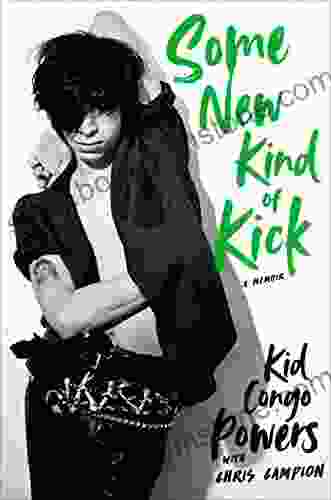
 Arthur Conan DoyleSome New Kind of Kick Memoir: A Journey of Transformation and Healing Through...
Arthur Conan DoyleSome New Kind of Kick Memoir: A Journey of Transformation and Healing Through... Dennis HayesFollow ·3.4k
Dennis HayesFollow ·3.4k Emmett MitchellFollow ·19.7k
Emmett MitchellFollow ·19.7k Amir SimmonsFollow ·10.1k
Amir SimmonsFollow ·10.1k Israel BellFollow ·6.4k
Israel BellFollow ·6.4k Milton BellFollow ·12.8k
Milton BellFollow ·12.8k Gage HayesFollow ·4.4k
Gage HayesFollow ·4.4k Christian BarnesFollow ·15.3k
Christian BarnesFollow ·15.3k Douglas FosterFollow ·7.1k
Douglas FosterFollow ·7.1k
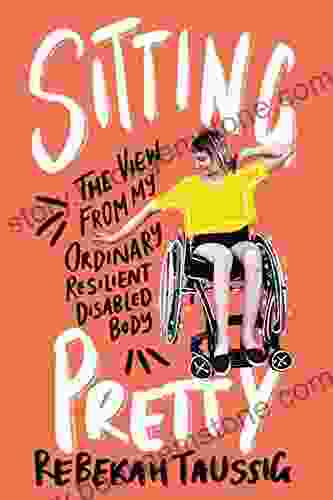
 Anton Foster
Anton FosterThe View From My Ordinary Resilient Disabled Body
In a world where...

 Chandler Ward
Chandler WardThe Rise of the Jain Two: A Monument to Naval Supremacy
In the vast...

 Jonathan Hayes
Jonathan HayesThe Right Thing by Scott Waddle: A Path Through the...
Scott Waddle's "The...
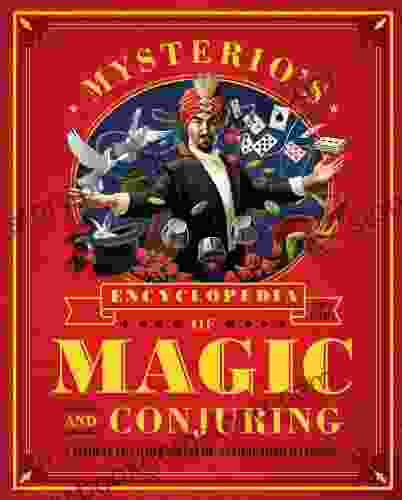
 Hamilton Bell
Hamilton BellMysterio Encyclopedia of Magic and Conjuring: A...
Mysterio Encyclopedia of...

 Zachary Cox
Zachary CoxAge of Expansion: Kurtherian Gambit, Valerie Elites - A...
: A Realm of Endless...

 Lawrence Bell
Lawrence BellA Short History of Falling: From Newton to Freefall
Falling is a...
5 out of 5
| Language | : | English |
| File size | : | 18280 KB |
| Text-to-Speech | : | Enabled |
| Word Wise | : | Enabled |
| Print length | : | 395 pages |
| Lending | : | Enabled |


